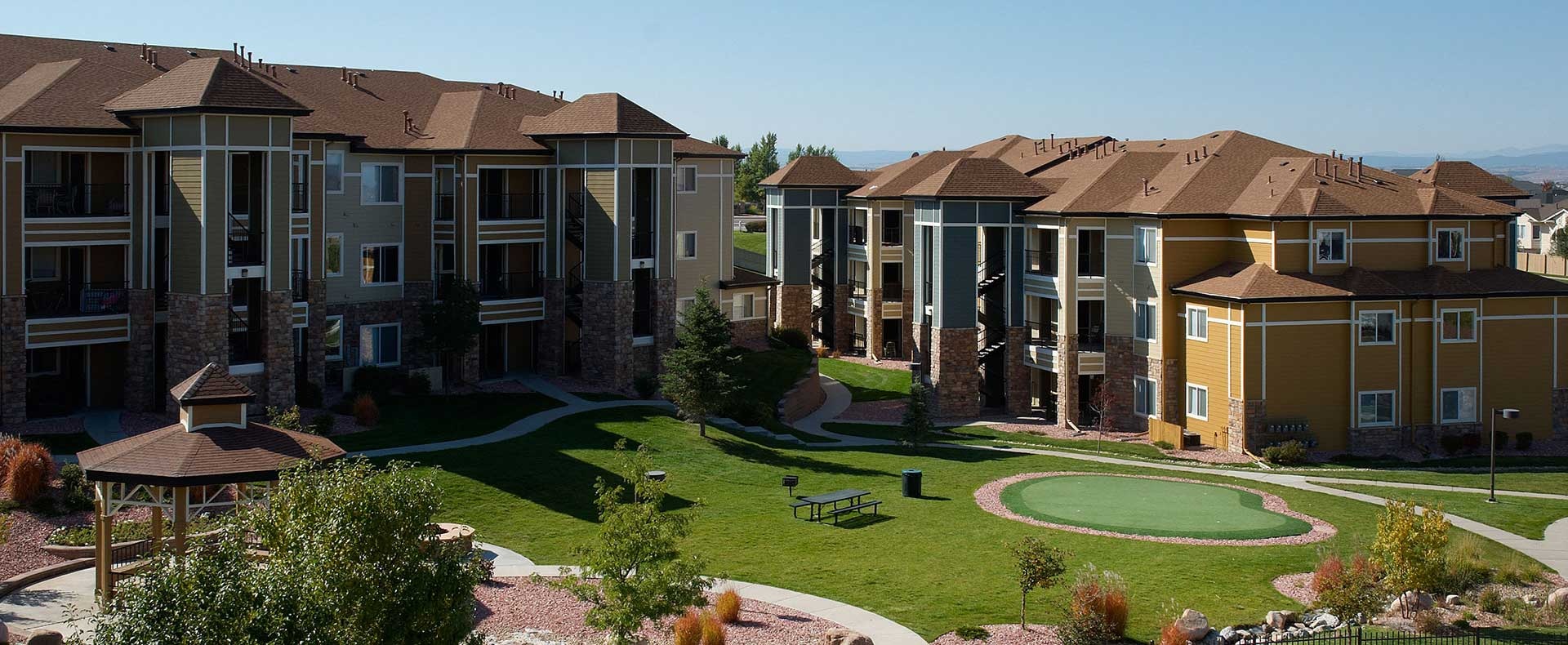Learn about these commercial real estate terms: Average Annual Return (AAR), Capitalization (Cap) Rate, Cash-on-Cash Return (CoC), Cost Segregation Study, Depreciation, Due Diligence, Forced Appreciation, Hurdle, Income Statement (T-12), Internal Rate of Return (IRR), Net Operating Income (NOI), Offering Memorandum, Preferred Return, Rent Roll, Schedule K-1, Value-Add Property
Average Annual Return (AAR)
This is the average annual return an investment produces. Not to be confused with return on investment, in this context, AAR includes the return of investment plus any profit in the form of cash the project generates as well as the appreciation, and is divided by the number of years the project is held. It is expressed as a percentage, and doesn’t take into account any effects of compounding.
In its simplest terms, AAR measures the money made or lost by a real estate investment over a given period of time. You will want to consider the AAR when looking at syndication opportunities and compare it with others. This allows for the comparison of projects that have different time horizons. Say for an example that projected returns on a $100K investment will be $100K over 10 years, giving you $200K at the end. This works out to be a 10% average annual return. Now if you are looking at a similar opportunity that returns the same amount over a 5-year period, you would calculate the AAR to be 20%. I think we would agree that the second opportunity is the better option, all other things considered equal.
Capitalization (Cap) Rate
The cap rate Is an important metric used to determine a property’s value as compared to similar properties. Generally, the prevailing cap rate of an area works similarly to the comps used in single-family housing. Using this prevailing cap rate and calculating it with the NOI gives you a property’s value as compared to comparable properties. In a way, the cap rate can be thought of as a comp. Another way to look at it is the yield of an investment over a 1-year time horizon with an all cash purchase. It tells you how much you would make on an investment if you paid only cash for it (no financing), and is the NOI divided by the purchase price.
Cash-on-Cash Return (CoC)
The CoC return (and sometimes indicated as CCR), for an investment measures the amount of cash flow a project will generate as a percentage of the total invested cash. This can also be referred to as the equity dividend rate, and you can almost view this like the interest rate on a savings account. This capital gain is expressed as a percentage and can be used to compare the projected returns that a real estate syndication investment might offer, and is an average annual rate for the length of that project. By the way, though this term is most commonly used in the context of real estate, it can apply to other investments as well. The equivalent in stocks would be noted as the return on investment, or ROI, except that in this case the CoC does not include any of the profits of a sale.
CoC = annual net operating income (NOI) divided by the total cash invested.
Cost Segregation Study
This is a study that reclassifies building costs to permit a shorter, accelerated method of depreciation for certain building costs. The primary goal of a cost segregation study is to categorize all construction-related costs that can be depreciated over a shorter tax life, typically 5 to 15 years, than the building, which is 27.5 years for residential real property.
Depreciation
This accounting expense is rooted in the truth that since assets tend to wear out over time, we account for that reduction in value, deducting the cost of an asset over its useful life. In most cases, this works out to be a way to defer paying taxes until a later date. This is because although part of a property’s value has been written off due to wear and tear, the sale of the property usually ignores the depreciation and sells for the full price as though there has been no decline in its useful value. Despite this, using depreciation is a good way to shield some of a syndication’s profits during the first few years against most taxes. Depreciation is a method of delaying the payment of taxes.
Due Diligence
This is the phase of a project, before acquisition, where a syndicator is scrutinizing the property data and pouring over every number possible. Audits and inspections are part of this process.
Forced Appreciation
Forced appreciation is a term used in commercial real estate that means improving a property in order to increase its value. This is the opposite of market appreciation, which is the natural or organic increase that happens over time or due to local growth. A multifamily property gets its value from the calculation of net operating expenses divided by the prevailing cap rate of an area, neighborhood or property. Therefore, as an apartment syndication’s income rises (in relation to expenses), the higher it is valued. In some cases, this can be dramatic which makes investing in apartment communities so appealing.
Hurdle
A target that might change the split or returns in favor of the syndicator when a project becomes highly profitable. It is meant to align interest and give an incentive for doing exceptionally well.
Income Statement (T-12)
The income statement will usually be in the form of a trailing 12-month (T-12) accounting of all incomes received through rents and other fees, as well as all expenses, utilities, legal fees, admin and marketing costs, and taxes for the 12-month reporting period. In the income section, other than rents, you will see laundry income, pet fee income, application fee income, utilities reimbursements, and other fees that tenants pay the operator. In the expenses section, you will find all costs broken down into categories, and will often list debt service payments.
Internal Rate of Return (IRR)
IRR accounts for the time value of money. A given return on investment received at any given time is worth more than the same return received at a later time, so the latter would yield a lower IRR than the former, if all other factors are equal. In other words, if the amount returned on an investment is the same, the IRR would get lower as the time it takes to get that return is stretched out.
The percentage rate earned on each dollar invested for each period that it is invested. The internal rate of return (IRR) is a method of calculating a real estate investment’s rate of return, or annualized effective compounded return rate. The term internal refers to the fact that the calculation excludes external factors, such as the risk-free rate, inflation, the cost of capital, or financial risk. The IRR is an estimate of a future annual rate of return, and can also measure the actual achieved investment return of an investment. You may also hear the term discounted cash flow rate of return (DCFROR), which is essentially the same.
Net Operating Income (NOI)
NOI is the annual rental income minus operating expenses, not including debt service. NOI is calculated from rental and other income a multifamily property produces, minus all the expenses and salaries needed to manage a property. This does not include expenses for servicing debt, like mortgage payments. Nor does it include any cash distributions to any general or limited partners (investors).
Offering Memorandum
This is the investor packet you will receive from a syndicator outlining the investment opportunity.
Preferred Return
The term preferred return is a return that puts you, an investor, in a preferred position when it comes to profit distribution of a project’s cash flow. Money goes to you first when there is a distribution, and until the hurdle of the preferred return is totally met, the syndicator gets nothing. If a project doesn’t make any money, chances are that you will not receive a return. A preferred position is first in line. This preference offers a bit of comfort to investors because it subordinates the sponsor’s profits (sometimes called the ‘promote’) to yours. The profits can come from the operation of a project (rents) and even from the sale or refinance of the property.
Rent Roll
The rent roll is the current operator’s list of income received in the form of rents and fees. It will account for every unit at the property, show the current rent payments received, the lease term, when rents are received for the current month, late fees assessed, and usually the going market rate for each of the units. This is a snapshot in time, and is usually archived on a daily, weekly or monthly basis, and analyzed over time to see trends or to help plan for future activities.
Schedule K-1
As part of an IRS income tax filing, the Schedule K-1 is the annual reporting that you will receive from the sponsor in a multifamily syndication. It is similar in purpose to the Form 1099. The syndication LLC files an information return to report their income, gains, losses, deductions, credits, and the K-1 lists the beneficiary’s share of these incomes, deductions, credits. The LLC does not pay tax on its income but “passes through” any profits or losses to its investors, who in turn must include K-1 item info on their tax or information returns. You may be liable for tax on your share of the syndication income, whether or not distributed. Do not attach the K-1 to your personal tax return unless you are specifically required to do so, as the syndicator will have already reported its contents to the IRS. Keep it for your records.
Syndication
Generally speaking, real estate syndication is a vehicle for people to pool their monetary resources, organized by a syndicator or sponsor, in order to invest in properties and projects (in this context I will be discussing multi-family properties) that are much larger than they could manage on their own. In the past, only the wealthiest among us were able to participate, but with new legislation over the past decade, this has become more accessible to investors like you and me.
The sponsor of the offering (the general partner) invests sweat equity in the project. He/she is responsible for finding the property, raising funds from investors (limited partners) acquiring the property, managing the day-to-day operations of the project, usually following a 3-7-year business plan. For this, the sponsor is typically rewarded with 10%-25% of the project’s equity and positive cash flow. This may seem like a lot, but remember that the sponsor is doing all the work. As the investors have no managerial responsibilities, this is about as passive as it gets. The investors simply receive their monthly or quarterly distributions as well as their share of the profits at the end of the project when the property gets sold.
The GP and the LP own the property together in the syndication and it is usually the goal to eventually sell the property at the end of the business plan’s term at a higher valuation. The business plan spells out how the GP will manage the property and increase its value through capital improvements as well as reducing costs and increasing rents and other income.
The GP and the LP own the property together in the syndication and it is usually the goal to eventually sell the property at the end of the business plan’s term at a higher valuation. The business plan spells out how the GP will manage the property and increase its value through capital improvements as well as reducing costs and increasing rents and other income.
Value-Add Property
A value-add property could be outdated or unkempt and need physical improvements or repairs due to neglect or operators lacking the funds to make improvements, and could be considered a class B or class C asset. There might also be operational challenges due to poor management and could have higher vacancy rates than other similar properties in a given area. Management problems, occupancy issues, and deferred maintenance are all key characteristics of a value-add opportunity. These projects often have little to no cash flow at the time of acquisition, yet have the potential to yield an incredible amount of cash flow once repairs are made or the management issues are addressed.
Part of the new operator’s business plan might be to increase cash flow over the hold period by improving or repositioning the property. Examples include making physical improvements, increasing efforts to rent vacant units, improving the quality of tenants, reorganizing or improving the property management team, and lowering operating expenses wherever possible. All this usually forces appreciation of value for the project, so when it comes time to sell, investors get to share in the sometimes significant capital gains.
To get a lot more terms and definitions please click here.
Full List of Commercial Real Estate Investing Terms
- 506(b) and 506(c)
- Accredited Investor
- Agency Loan
- Alignment of Interest
- Apartment Complex/Community
- Average Annual Return (AAR)
- Break-Even Occupancy
- Business Plan
- Capital Expenditures (CapEx)
- Capitalization (Cap) Rate
- Cash Call
- Cash Flow
- Cash-on-Cash Return (CoC)
- Class A, B, C, D Property
- Concessions
- Core Property
- Core-Plus Property
- Corporate Housing
- Cost Segregation Study
- Crowdfunding
- Debt Service
- Debt Service Coverage Ratio (DSCR)
- Depreciation
- Distribution
- Doors
- Due Diligence
- Duplex
- Equity Investment
- Exit Cap Rate
- Exit Valuation
- Fees
- Forced Appreciation
- Garden Style
- General Partner (GP)
- Ground-Up Development
- Holding Period
- Hurdle
- Income Statement (T-12)
- Internal Rate of Return (IRR)
- Job Growth
- Letter of Intent (LOI)
- Limited Partner (LP)
- Loan-to-Value Ratio (LTV)
- Loss to Lease
- Luxury
- Manufactured Housing Community
- Metropolitan Statistical Area (MSA)
- Midrise
- Mixed-Use Buildings
- Multifamily Property
- Net Operating Income (NOI)
- Offering Memorandum
- Operating Account
- Operating or Company Agreement
- Operator
- Opportunistic Property
- Passive Income/Investing
- Population Growth
- Preferred Return
- Private Placement Memorandum (PPM)
- Pro Forma
- Purchase and Sale Agreement
- Quadplex
- Ratio Utility Billing System (RUBS)
- Real Estate Investment Trust (REIT)
- Recapture
- Rent Premium
- Rent Roll
- Schedule K-1
- Senior Housing
- Sensitivity Analysis
- Short-Term Rental
- Sophisticated Investor
- Split
- Sponsor
- Student Housing
- Submarket
- Subscription Agreement
- Subsidized Housing
- Syndication
- Syndicator
- Tower
- Townhome
- Triplex
- Types of Multifamily
- Underwriting
- Value-Add Property
- Workforce Housing
Download The Commercial Real Estate Terms EBook Here
This download has definitions to the industry terms used on this website, and is the next best thing to the decoder ring you might have found in a cereal box as a kid.


